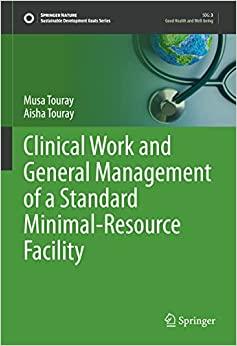Question
Utilizing the Gap Planning, how can I address the issues in this case study? Utilizing the Gap Planning , how can I address the issues
Utilizing the Gap Planning, how can I address the issues in this case study?
Utilizing the Gap Planning, how can I address the issues in the below case study?
Case Study Details: For the incarcerated population in the United States, health care is a constitutionally guaranteed right under the provisions of the eight amendments which is the prohibition against cruel and unusual punishment (see Estelle v. Gamble). This particular prison can hold in excess of 1,728 offenders and routinely houses between 1,600 and 1,700 women on any given day. This institution incarcerates all custody classes to include minimum security, medium security, close custody, death row, and pretrial detainees.
The health care operation provides the highest level of care for female offenders in the state. The health care facility is a 101 thousand square foot, 150 bed, three-story building that cost the taxpayers $50 million dollars to construct and is a hybrid of an ambulatory care center, long-term care center, and behavioral care center. The health care facility also houses an assisted living dorm.
The patient demographic includes women who have multiple co-morbidities including substance abuse, seriously persistent mental illnesses (SPMI), diabetes, cardiovascular disease, cancer, morbid obesity, HIV / AIDs, hepatitis, etc. On any given day there will also be 30 to 60 offenders who are pregnant, with 98% of those offenders having a history of substance abuse; all pregnant offenders are considered high-risk. The dental health of this patient population is exceptionally horrendous because of excessive drug abuse coupled with a sugary diet and poor oral hygiene practices. It is not uncommon for a 23-year-old to need all of her teeth extracted.
There are approximately 300 FTEs to include correctional staff that operate the facility and provide care to the offender population. The healthcare facility is comprised of the following directorates: (a) Medical, (b) Nursing, (c) Behavioral Health, (d) Pharmacy, (e) Dental, (f) Medical Records, (g) Health Service Support, and (h) Operations and Security.
Although the health care facility has a vast amount of capability, there limitations: (a) This facility does not have advanced cardiac life support capability (ACLS), (b) no surgical capability, (c) no ability to conduct telemetry, (d) no oral surgery beyond simple extractions, (e) no obstetrical capability beyond out-patient clinics, (f) MRI, (g) level 2 ultrasound, and the list goes on.
Those inmates who have medical needs that cannot be addressed by the health services staff at the correctional facility will need appointments with external health care providers who have a business relationship with the prisons in this area. On any given month, there will be approximately 300 offenders who will go to outside medical appointments, and making certain that these appointments take place is where the challenge lies. Similar to many health care operations, the prison Utilization Review / Case Management Department facilitates all external appointments and form the lynchpin between the correctional facility health care providers who refer offenders for specialty appointments, and the outside organization providing that appointment.
Your assignment:You are the Case Coordinator. You have 300 patients that need to be scheduled for outside specialty appointments every month. You are tasked by the Administrator to develop a strategic plan organizing the out-of-the-facility appointments without impairing internal services.
Step by Step Solution
There are 3 Steps involved in it
Step: 1

Get Instant Access to Expert-Tailored Solutions
See step-by-step solutions with expert insights and AI powered tools for academic success
Step: 2

Step: 3

Ace Your Homework with AI
Get the answers you need in no time with our AI-driven, step-by-step assistance
Get Started


